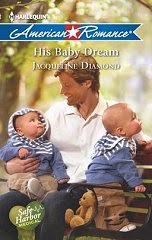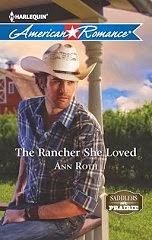
Happy Halloween to those who celebrate...
Ancient Origins
Halloween's origins date back to the ancient Celtic festival of Samhain (pronounced sow-in).
The Celts, who lived 2,000 years ago in the area that is now Ireland, the United Kingdom, and northern France, celebrated their new year on November 1. This day marked the end of summer and the harvest and the beginning of the dark, cold winter, a time of year that was often associated with human death. Celts believed that on the night before the new year, the boundary between the worlds of the living and the dead became blurred. On the night of October 31, they celebrated Samhain, when it was believed that the ghosts of the dead returned to earth. In addition to causing trouble and damaging crops, Celts thought that the presence of the otherworldly spirits made it easier for the Druids, or Celtic priests, to make predictions about the future. For a people entirely dependent on the volatile natural world, these prophecies were an important source of comfort and direction during the long, dark winter.
To commemorate the event, Druids built huge sacred bonfires, where the people gathered to burn crops and animals as sacrifices to the Celtic deities.
During the celebration, the Celts wore costumes, typically consisting of animal heads and skins, and attempted to tell each other's fortunes. When the celebration was over, they re-lit their hearth fires, which they had extinguished earlier that evening, from the sacred bonfire to help protect them during the coming winter.
Halloween's origins date back to the ancient Celtic festival of Samhain (pronounced sow-in).
The Celts, who lived 2,000 years ago in the area that is now Ireland, the United Kingdom, and northern France, celebrated their new year on November 1. This day marked the end of summer and the harvest and the beginning of the dark, cold winter, a time of year that was often associated with human death. Celts believed that on the night before the new year, the boundary between the worlds of the living and the dead became blurred. On the night of October 31, they celebrated Samhain, when it was believed that the ghosts of the dead returned to earth. In addition to causing trouble and damaging crops, Celts thought that the presence of the otherworldly spirits made it easier for the Druids, or Celtic priests, to make predictions about the future. For a people entirely dependent on the volatile natural world, these prophecies were an important source of comfort and direction during the long, dark winter.
To commemorate the event, Druids built huge sacred bonfires, where the people gathered to burn crops and animals as sacrifices to the Celtic deities.
During the celebration, the Celts wore costumes, typically consisting of animal heads and skins, and attempted to tell each other's fortunes. When the celebration was over, they re-lit their hearth fires, which they had extinguished earlier that evening, from the sacred bonfire to help protect them during the coming winter.
Famous Haunts
Birthplace of Liberty
Philadelphia was the first settlement in the colony of Pennsylvania, which William Penn founded in 1682. The city was the birthplace of the American Revolution, where great statesmen such as George Washington, Thomas Jefferson, and Benjamin Franklin once walked the streets. By the mid-1700s, Philadelphia was the largest city in the American colonies. On July 4, 1776, members from each of the thirteen colonies gathered in the Pennsylvania Statehouse – now known as Independence Hall – to sign a document called the Declaration of Independence. Many say that the ghosts of our nation's Founding fathers are still hanging around Independence Hall . . .
Dancing Ben
Benjamin Franklin was an extraordinary writer, publisher, and inventor, and he helped draft the Declaration of Independence. In later years, his influence and intelligence helped our country establish the Senate and Congress and adopt the Constitution. This remarkable man spent much of his life in Philadelphia,
And he may be there still, long after his death. Eyewitnesses have seen Franklin's restless spirit at various locations throughout the city. His favorite spot, some say, is the Library Hall of the American Philosophical Society, which he helped found in 1743.
Many claim that Franklin's energetic spirit even lives on in the streets of Philadelphia, coming to life out of an old statue. Legend has it that the wise old statesman is sometimes seen dancing through the City of Brotherly Love!
Anyone have a ghost story or something "Creepy" they'd like to share?
Marin Thomas
For The Children (Oct 07)





6 comments:
Nothing creepy, just Happy Halloween!
Never met a ghost, probably because I don't believe in them. However, while on vacation in Lancaster, PA we took the ghost tour in Strasburg. It's a walking tour and the ghostly tales are very entertaining. I took another one in Williamsburg, VA too and it was very interesting. And this from a person who doesn't believe in ghosts but loves an entertaining tale.
Happy Halloween... no creepy, scary story... sorry!
Hum... I never knew from where the whole tradition came from!
Jennifer
Once in awhile I watch a TV program that highlights huanted houses and mansions around the world and I keep telling myself that one day I am going to take a tour of one of those places. I don't know whether I believe in ghosts or not because I've never seen one...but I do wonder.....and when I was a kid it was a common practice to hold your breath when you walked or drove past a cemetery to keep the ghosts from following you!
Marin
For The Children Oct 07
www.marinthomas.com
Thanx for the famous haunts... did not know about them!
Post a Comment